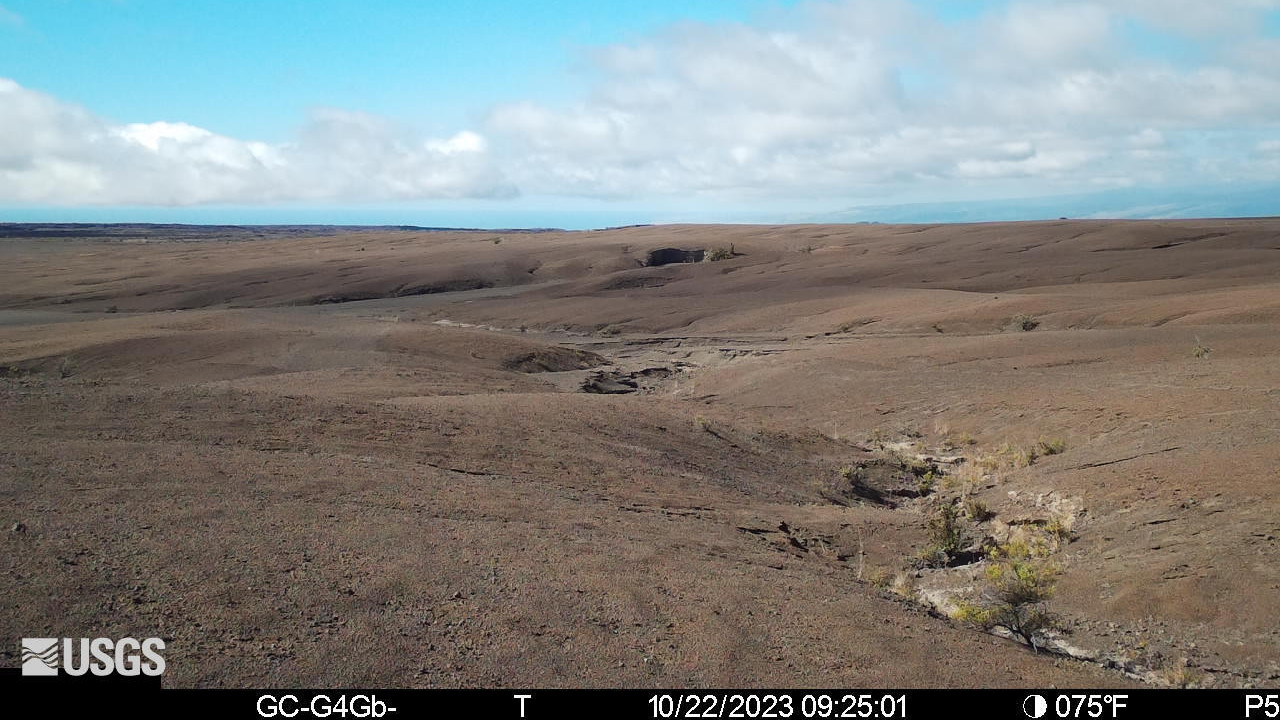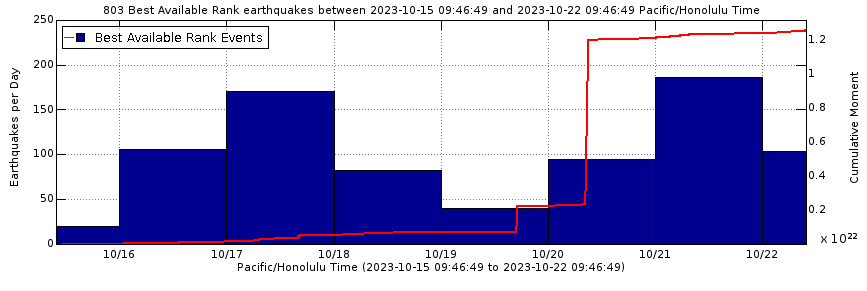(BIVN) – Kilauea volcano is not erupting, but there has been a slight uptick in the level of unrest to the south-southwest of Kīlauea’s summit.
The unrest “continued over the past 24 hours in association with an intrusive event that began in early October,” scientists with the US Geological Survey reported on Sunday.
“Unrest may continue to wax and wane with changes to the input of magma into the area,” the USGS said. “he summit of Kīlauea remains at a high level of inflation and eruptive activity is possible in the coming weeks or months. No unusual activity has been noted along Kīlauea’s East Rift Zone or the Southwest Rift Zone.”
From the USGS Hawaiian Volcano Observatory on Sunday, October 22:
Summit Observations: Unrest to the south and southwest of the summit area of Kīlauea has remained somewhat elevated over the past day, following a few days of decline. Such waxing and waning of unrest may continue.
Renewed seismicity beneath the south end of Kīlauea caldera extending to the southwest along the trend of December 1974 vents began on October 16. The renewed activity initially peaked on October 17, but following a decline of several days, the seismic unrest over the past two days has again been at levels similar to that on the 17th. Over the past 24 hours, approximately 109 earthquakes were recorded in Kīlauea’s summit region, roughly the same as the 96 during the previous day. Most of the earthquakes related to this unrest are at depths of around 1–3 km (0.6–2 mi) below the surface.
The Uēkahuna summit tiltmeter located north of the caldera was generally flat over the past day. The Sand Hill tiltmeter, located just southwest of the caldera, showed ongoing inflation over the past 24 hours. Overall, inflation at the summit of Kīlauea remains high and has surpassed the level seen just before the most recent eruption on September 10th. However, the current rate of inflation in the region has diminished significantly since October 4-6.
Sulfur dioxide (SO2) emission rates remain low and were measured at a rate of about 100 tonnes per day on October 19.
It is unclear if unrest in Kīlauea summit region will continue and, at this time, it is not possible to say with certainty if activity will lead to an eruption; activity may remain below the ground surface. However, an eruption remains possible, most likely in Kīlauea’s summit region inside of Hawai‘i Volcanoes National Park and away from infrastructure. Similar patterns of earthquake activity and ground deformation occurred to the south of the caldera prior to the September and June 2023 eruptions in Kīlauea summit caldera (in Halemaʻumaʻu crater and on the downdropped block). Volcanic gas emissions pose the greatest hazard to areas downwind of Kīlauea’s summit.
There is currently no sign of an imminent eruption and increasing inflation and earthquake activity (heightened unrest) are expected to precede an eruption. During periods of heightened unrest prior to recent eruptions at Kīlauea summit, signs of imminent eruption did not appear until 1-2 hours before lava reached the surface. The summit of Kīlauea remains at a high level of inflation and eruptive activity is possible in the coming weeks or months. HVO scientists will continue to monitor Kīlauea volcano closely and will issue additional messages as warranted by changing activity.
Hawaiʻi Volcanoes National Park says the Mauna Iki Trail and the Kaʻū Desert/Footprints Trail from the Footprints exhibit to the Mauna Iki Trail intersection remain closed due to the volcanic unrest in the area.



by Big Island Video News10:26 am
on at
STORY SUMMARY
HAWAIʻI VOLCANOES NATIONAL PARK - The seismic unrest over the past two days has again been at levels similar to that on October 17th.